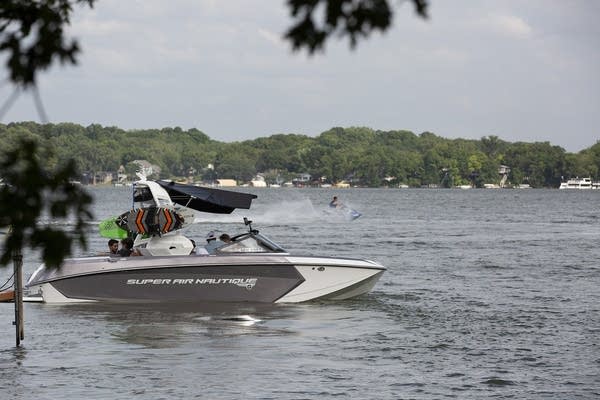Study: Larger waves from wakeboats need more distance from shore to reduce size, power

A wakeboat pulls away from a dock in July 2019 on Lake Minnetonka in Mound, Minn. Opponents of wakesurfing believe that the waves created by the boats cause erosion along the lakeshore.
Christine T. Nguyen | MPR News 2019 file
Go Deeper.
Create an account or log in to save stories.
Like this?
Thanks for liking this story! We have added it to a list of your favorite stories.


